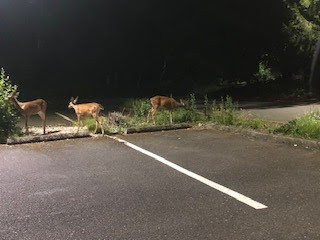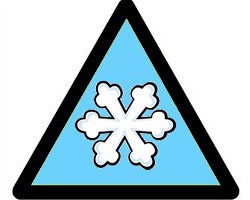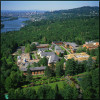A Bigger Impact: Please Consider the Furry and Feathered Creatures on Campus
Open gallery

As the school year gets underway and we all begin to settle into our new homes, we at Campus Safety would like to remind you that we are not alone. Sure, there’s the neighborhood and surrounding communities; however, that’s not the focus of this series of articles. Instead, we’d like to focus on our neighbors who’ve spent the summer exploring campus.
Here at Lewis & Clark we are surrounded by nature. The trees and undergrowth provide shelter for many furry and feathered creatures who tend to shy away from human contact. In their elusiveness, they are often forgotten about by students and faculty. It’s been a delight this Summer seeing them return; however, with the increased population and activity of fall semester, this population retreats further into the woods to stay away from human contact.
From coyotes, to barred owls, and black tailed deer, Lewis & Clark hosts many critters, large and small. When we respect the boundaries of the natural spaces around us, they in turn allow us to share in their wonder. In the subsequent series of articles, I hope to introduce you to some of the many creatures that call Lewis & Clark home along with you, and who you may be able to spot yourself, provided we respect their boundaries. Here are a few ways we can help to increase your opportunities of see them:
- Limit your time in the ravines: The hiking trails are exciting, and we know this is a popular spot to try and avoid the eyes of patrolling officers; however, the animals go there to hide from us as well. Any time spent in the ravines forces the wildlife to retreat further, and find new hiding spaces off campus. Please stick to the trails and limit yourself to daytime hours.
- Observe Quiet Hours: Quiet hours are set to help us be respectful of the neighbors in our dorms; however, they also provide a time when the critters can feel safe coming on campus to graze. If noise levels are up throughout the night, they are likely to stay away from campus and find new places to eat and live.
- Clean Up After Yourself: The things you use and touch will carry your scent. If you leave garbage lying around, you leave your scent behind. This will warn many of these animals about your presence, keeping them away from the area. Use the trash cans, use the designated off campus smoking areas, and dispose of large items in the appropriate dumpsters/receptacles.
- Self Police: We get it. As much as we enjoy interacting with all of you in non-administrative capacities, neither us or any of you enjoy it when discipline is involved. So holding each other accountable, and allowing yourself to be accountable to your peers, is a great way to improve the campus environment. Respectful communication is the key to Self Policing and accountability.
We hope you are able to enjoy the wildlife living around us, here at Lewis & Clark. Respecting the campus is respecting the natural world that surrounds it as well.
More Campus Safety Stories
Campus Safety is located in Campus Safety on the Undergraduate Campus.
MSC: 107
email safety@lclark.edu
voice 503-768-7855
fax 503-768-7195
Emergency 503-768-7777
Alternate Phone 503-593-5457
Director Jay Weitman
Campus Safety
Lewis & Clark
615 S. Palatine Hill Road MSC 107
Portland OR 97219

